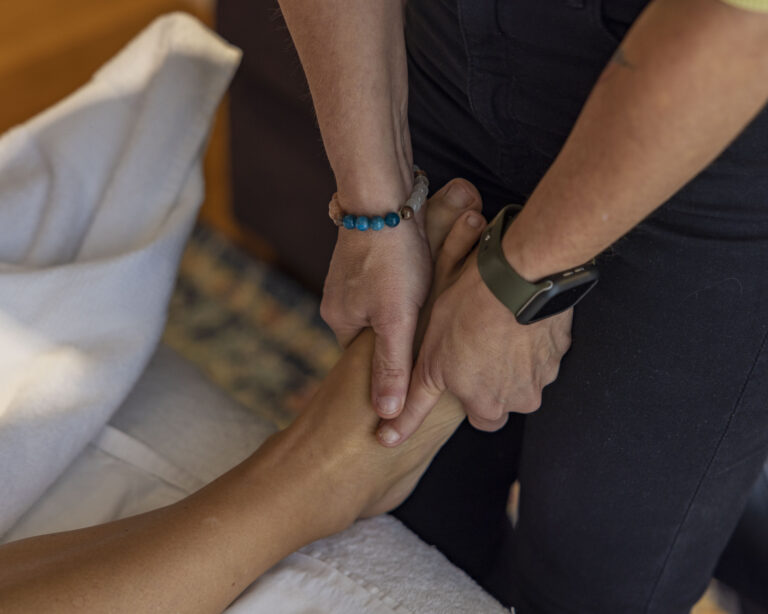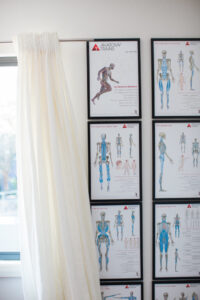
Structural Integration: Is it for you?
I’ve been bodyworking for over 20 years now!
From the simple relaxation techniques of Swedish massage to more remedial and rehabilitative sports-based modalities and into the specialised principles of myofascial release work, I’ve used a wide range of therapeutic touch on many hundreds of bodies.
My favourite modality, by far, is Structural Integration (SI). In fact, SI is so effective that I focus my entire practice on it.
What is SI?
Structural Integration (SI) is based on the work of biochemist Dr. Ida P. Rolf and is a specialised bodywork that manipulates the fascia – the connective tissue of the body.
Fascia surrounds our muscles and muscle groups, blood vessels, organs, and nerves. It binds some structures together while allowing others to slide smoothly over and around each other.
This extensive network of connective tissue is designed to be flexible and elastic, moving freely with muscles and bones.
Injury, stress, repetitive movements and the wear and tear of ageing can cause the fascia to lose some of this elasticity and become shorter, tighter, and denser. It’s easy to visualise how tightened fascia pulls on our muscles and skeletal structures causing misalignment and poor posture. This can in turn cause pain, discomfort, and debilitating fatigue, and can even contribute to depression and anxiety. When we feel ‘knots’ in our bodies, it’s not muscle; it’s fascia.
SI works to lengthen, stretch and soften thickened fascial tissue to restore postural balance and bring back ease of movement and return to feeling “at home” in your body.
I specifically use Anatomy Trains Structural Integration (ATSI) in my practice, because:
✓ It is system-oriented, rather than symptom-based. This means I’m considering the whole body during every session and working towards whole-body integration over the total course of treatment for lasting results
✓ Treatment is applied gently and sensitively, with full client participation and autonomy
✓ The ATSI method welcomes and values the input of other disciplines, so I can use other modalities where appropriate
Is SI the same as deep tissue massage

SI does employ some techniques that feel similar to very deep tissue massage. But the difference is that SI focuses more on the fascia than the muscle, not only where you are feeling pain and tension but at other key points on your body, too.
SI works by releasing and reorganising your body’s fascia for whole-body health. As an example, manipulation of the visceral fascia (the connective tissue surrounding your organs) helps with functional and structural imbalances throughout the body. The fascia connects everything, making fascial bodywork a truly holistic approach.
Is SI the same as Rolfing?
Ultimately: yes!
Rolfing is another term for Structural Integration, which was originally called ‘Rolfing SI’ after its creator Ida P. Rolf. ‘Rolfing’ was, simply, the original ‘brand name’ for SI.
There is one small difference between Rolfing and SI in modern practice, which is that the full Rolfing ‘series’ consists of 10 sessions, whereas in SI, we commit to 12 sessions.
Is SI the same as Myofascial Release?
Since SI is a process of repetitive, deep, fascial and myo-fascial (‘myo’ meaning ‘muscle’) releases, combined with slow, active movements, the answer is yes.
But the answer is also no!
I think of SI as a series of advanced and organised myofascial release techniques performed in an arranged order over a series of sessions.
Is SI right for me?

“Emma is a talented, knowledgeable, empathic, and caring bodyworker.” ~ Helen M.
I truly believe that SI is right for everyone!
Some clients come to me to ease their chronic pain and stress while others hope to improve their athletic performance, manage injuries or enjoy regular bodywork for general health and well-being.
No matter your health status or reasoning for coming to the bodywork table, SI holds huge benefits for you.

My mission as a Structural Integration practitioner is to offer you the full benefits of my training, including:
- Improved posture
- Improved flexibility
- Better spine health and function
- Better joint function
- Less pain, stiffness, and fatigue
- Increased athletic performance
To book your initial assessment and/or SI session, click HERE.
Or to find out more about SI and the 3-series and 12-series treatment options, visit HERE.
“I began seeing Emma for treatment for a debilitating back injury about 3 years ago. I am so glad to have found her, as I sincerely believe her treatment regime saved me from a surgical procedure and all its associated risks.” ~ Geoff P.